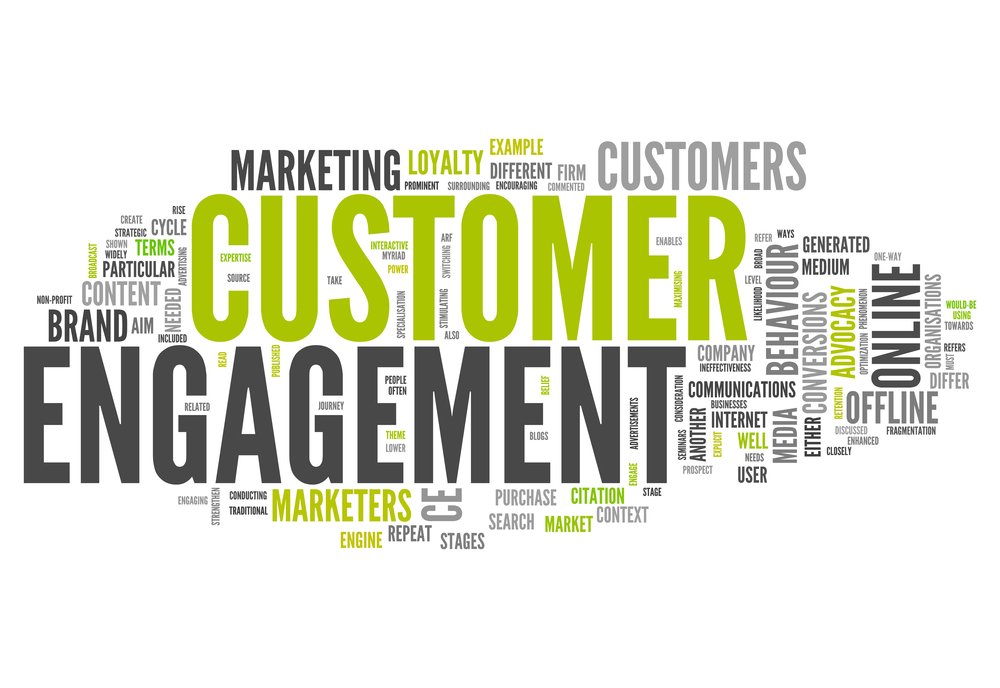Customer satisfaction is the key to customer retention, and it is a critical cog in the wheel for any growing business. That said, there is no real measure of customer satisfaction and what you don’t know could hurt your business.
Satisfied customers are also crucial to any business in more ways than one. First, they are bound to buy more products or services over a shorter period. Second, once you can establish customer loyalty, they will partake in word-of-mouth showing their advocacy. Third, they are bound to bring in referral customers to your business. Thus customer satisfaction adds a lot of value to a business cycle.
It is a known fact that a business will not act on a laundry list of improvements just to satisfy a few customers. However, it is essential to analyze the cause of why the laundry list exists and look for changes or developments that the entire customer group can take advantage of. So, a dedicated customer service team is essential to keep the ball rolling. Similar to the above, there are certain customer satisfaction myths that this piece looks to debunk.
Myth #1: Customer loyalty takes precedence customer satisfaction
This is highly misplaced assumption, and where loyalty is essential, satisfaction brings better results in abundance. Consider that loyalty can always be controlled with price discounts, offers, and freebies while happiness will come only with the use of the product. Pursuing the line of allegiance will perhaps, get more business in the long run but ignoring satisfaction will bring no business in the future.
Loyalty thus can be bought but not customer satisfaction.
Myth #2: Maximise customer satisfaction
Maximising customer satisfaction is not possible, period. Satisfaction is more of a personal vibe with the customer and is not in control of the business. All that the company can do is to optimize it with more features and better service. Any effort to maximize satisfaction through an increment in counters or through such efforts might improve it a niche above but at the cost of profitability.
Put profit above all and stretch only as much as you can to achieve optimal customer satisfaction.
Myth #3: Try and exceed customer expectations
This one is good for the textbooks. Meeting customer expectations is more realistic than exceeding them. On the ground level, how will you reach something that is not tangibly expressed? Customer satisfaction is a tight-rope in the sense that, you can never indeed establish what action will result in meeting the expectations.
The reality is that customer expectations should be met using excellent and friendly business strategies that add to the bottom-line instead of striving to invest in it. Meeting such expectations should be a pleasant accident rather than a calculated move.
Myth #4: Avoid customer dissatisfaction at all costs
If you have been in business for some time you will know that you are making 80% of your money from 20% of your customers. So, going by the 80/20 formula keeping customers who probably don’t add to your bottom-line may seem to be a loss-making proposition. However, this does not mean that you leave those customers out. If you use a good CRM and have customer profiles and data available, handling dissatisfaction from selected customers who add to your profits can be a joy. Customer dissatisfaction will always be there to some extent, eliminating it 100% is not possible or even profitable.
Myth #5: Minimize customer complaints
Businesses do not like complaining customers. However, such complaints must be dealt in a proper manner and not treat them as distractions. Listening intently to complaints can give you insights into your business process that can be bettered. Also, some customers never complain, which again does not mean that they do not have complaints.
Encouraging complaints and resolving them is the way to go. Failure to listen to them is to set yourself for failure.
Myth #6: The percentage of customer satisfaction
Customer satisfaction is a two-faced sword. There are scales – external as well as internal (for some businesses) that measure it on a percentage scale. Honestly, no customer is completely satisfied or dissatisfied. On the one hand, you are looking at a tangible expression of satisfaction, and on the other hand, you measure something that is a complete bundle of emotions and thoughts that are invariably bound to change. A simple scale or a percentage is no measure of satisfaction. It is only an indicator.
At the ground level, simplifying customer satisfaction can result in adverse decisions affecting your business long-term.
Myth #7: Customers are loyal
Customer loyalty is not about brands anymore. They have grown to get ahead of that mindset and are focussing more on customer service. Regarding customer satisfaction, they are happier where they get personalized attention to resolve any issues.
In this scenario, do not think that a customer is satisfied or loyal to you just because you are a well-known brand.
Myth #8: A satisfied customer is a loyal customer
Customer satisfaction is a combined measure of his or her attitude towards the brand, products, and services. Customer loyalty is entirely different and is a combined measure of opinions, behaviors, attitudes, repeat purchases and feelings. Customers can showcase loyal behavior without a loyal view and vice-versa.
So, assuming that a satisfied customer is a loyal customer can be quite misleading.
Myth #9: Customers always look at the lower prices
Many reports have been crafted on the subject, however, as per most surveys, it has been found that the percentage of customers looking for quality is a tad more than those looking for a reasonable price.
Irrespective of what your customers prefer, quality or price, it is always a good policy to consider the value you provide for the price. Focus on offering value for money.
Myth #10: Technology is critical to improving customer loyalty
Technology applied to produce good or services is internal to the organization. However, if you advertise the technology used, which is better than the competition, could be a USP. The focus of investing in technology should be to provide better goods and services rather than advertising it to gain customer loyalty. Also, the technology used for communication with customers should be chosen with care to facilitate more accessible and better customer interaction and not for the sake of it.
End of the day, a customer will look at the quality of goods for monies paid and in a more natural way to get through to you. He or she is not impressed by what you use. They are influenced by how better it gets for them.
Myth #11: Customers will be loyal if they like you
Amidst fierce competition, it will be foolish to assume that customer loyalty depends on how well he or she likes your company. In which case, your competition will make the best efforts to get into their good books. Assuming this end will be dangerous.
Customers are fickle, don’t ever take them for granted.
Myth #12: Loyalty building is expensive
This is the biggest myth of them all. Businesses, small or big need not worry about costs of loyalty building. Offering excellent products and services at the right price will build loyalty automatically.
If you are looking to build customer loyalty, you are on the wrong path, focus on your business and loyalty will come automatically.
Myth #13: To build customer loyalty, you will need personal interactions with customers
Personal interaction goes for a toss when a customer uses your product and finds it faulty or too expensive. Building relationships is a good thing to get more business but never assume that such relationships are going to build the loyalty factor.
Personal relationships and business never did mix, why do you think they are going to come to your aid today?
Myth #14: The more numbers of times you contact a customer, the more loyal he or she will be
Why would want to reach out to a customer, for up-sell or cross-sell? And, how many times a week do you think you will do that? None of your customers would like to be spammed. So, increased contact is not a solution to gaining customer satisfaction or loyalty.
Use the right communication mediums to keep in touch and keep testing your communication frequencies without annoying your customers.
Myth #15: Measuring customer loyalty is only possible through customer satisfaction surveys
Customer satisfaction surveys are great to measure customer satisfaction, however, they are more qualitative. There are specific quantitative methods to measure the customer loyalty. They could include some metrics like purchase frequencies, how much revenue they are bringing and so on. These can be measured through some analytics tools available online.
Myth #16: Retention does not help build better bottom-lines?
To de-myth this, consider that the percentage of selling successfully to an existing customer is around 60-65% while selling to a brand new customer, your chances are anywhere between 5 to 20%. With the vast potential to up-sell and cross-sell, retention does help build better bottom-lines.
Myth #17: Tracking customer loyalty is a challenge
Not true at all, there are so many tools out there like membership cards, rewards, points, unique customer numbers and so on to assign memberships to customers. Once done, you can collect a wealth of data that can be used to analyze and assess customer loyalty levels. Tracking these metrics can a long way is monitoring customer loyalty.
Myth #18: Does customer retention has a real, measurable ROI?
While it is quite tricky to get the hang of ROI for the spend on customer retention, it is not as impossible it sounds. The better method here would be looking at the CLV (Customer Lifetime Value) instead of ROI. The CLV is a projected revenue that a customer will pass to you in his lifetime.
Customer satisfaction is a critically important metric for any business, and it is only advised that you get rid of all those myths that surround the very concept of customer retention and loyalty. It is as important as the new business that you generate and ignore it at your peril.
Customer experience management Customer satisfaction Customer value






